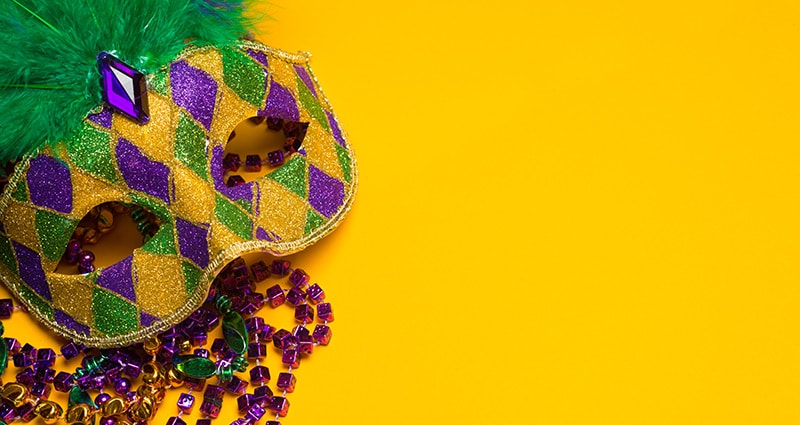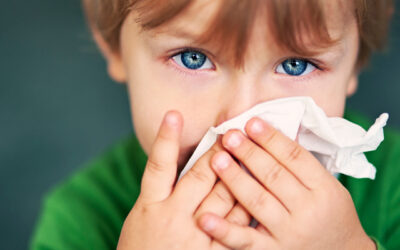We love to let the good times roll, especially this time of year.
Catch Some Beads
When you head out to the parades with a plan to catch a lot of throws, remember to bring along sturdy, reusable bags to stash all your treasure. A backpack can be a great, hands-free idea, although dropping caught beads into an open bag at your feet may be even more efficient.
Practice with your kids beforehand so they know to pay attention when the floats are rolling. If they’re not into the bead bonanza, make sure they stand behind you to reduce the risk of getting hit by a flying strand of beads or another hard throw.
Repurpose Beads into Art
Once you’ve gathered all the beads, give them a dunk in hot, soapy water, rinse and let them dry completely. Beads can be reused/re-thrown by some krewes, but they also make an amazing art supply.
With a little supervision and a cool glue gun, budding young artists can create fun collages on cardboard with the beads. Get creative by cutting the beads apart or leave some in long twirly strands. Painting the cardboard first with poster paint can add dimension to the final project, too.
Younger children prone to putting beads in their mouths, nose or ears should be closely supervised, or perhaps they’d enjoy more bead throwing and catching practice.
Meaning of Mardi Gras
Carnival is a season that begins with Epiphany, or Twelfth Night on January 6, and ends with Mardi Gras. Mardi Gras is French for “Fat Tuesday,” and it’s the celebration just before Lent starts, with Ash Wednesday the next day. Within the Catholic Church, Lent is a holy season of fasting and penance during the 40 weekdays before Easter.
Mardi Gras becomes one last feast before that time of giving up certain foods as a sign of devotion. A traditional practice of abstaining from eating meat during Lent is also the origin of the word “carnival,” which comes from the Latin words “carne,” meaning flesh, and “levare,” meaning to remove.
Enjoy a Tasty King Cake
One of the most common traditional feast items for Carnival season is the king cake, an oval-shaped dessert of cinnamon-filled dough covered in multi-colored sugar and icing that’s a cross between a coffee cake and pastry. Even donut shops are in on the trend with a cinnamon donut or cream-filled variety dressed in the standard icing and sugar. Colored icing or sugar of purple, green and gold make the cake resemble a jeweled crown, which honors the Wise Men who visited the Christ Child on Epiphany. A small plastic baby is often baked into the cake. Tradition says whoever gets the piece with the baby buys (or makes) the next cake.
In south Louisiana, there’s no shortage of commercial king cakes to try. It can be a hot topic to debate which bakery or grocery store offers the best. In some areas, bakers have raised the bar with savory boudin-stuffed king cakes drizzled with candied pecans and cane syrup. While these decadent delights are tempting, there are ways to lighten it up if you want to make a somewhat healthier version with your kids.
Swap out some or all the flour for whole-wheat flour, almond flour or a similar option to pack in some added protein. Sugar substitutes also can help rein in the highs and eventual crashes while reducing calories.
A super simple dupe is to use a tube of cinnamon rolls, arranging them on a baking sheet in a crown-like circle. After baking and frosting, add some colored sugar to make the treats even more festive. Regular table sugar can be dyed easily with food coloring. Shake small amounts of sugar (1/4 cup) and food coloring (a few drops) in a plastic zip-top bag to mix before sprinkling on your baked Carnival creations.




